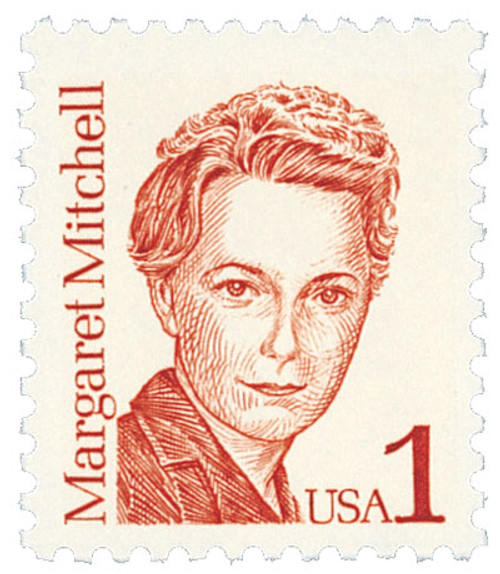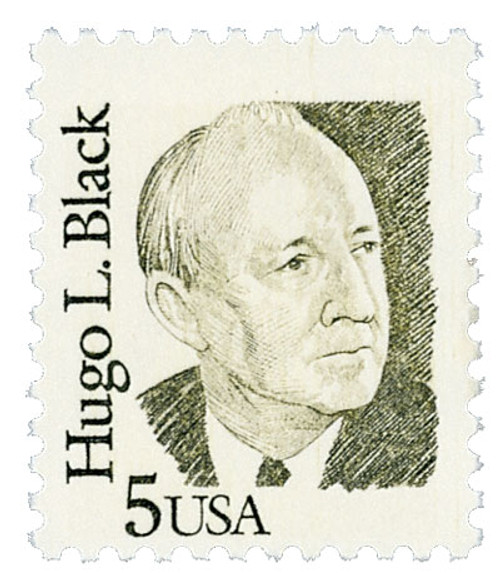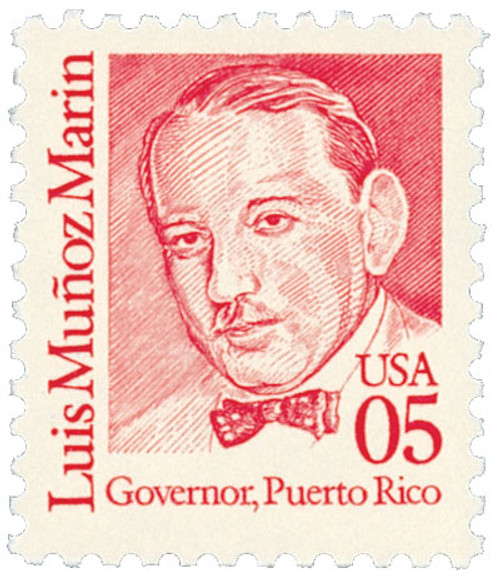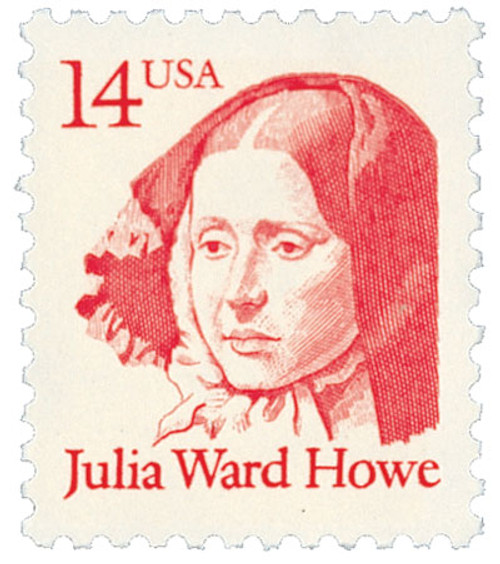
# 2179 FDC - 1994 20c Great Americans: Virginia Apgar
U.S. #2179
1994 20¢ Virginia Apgar
Great Americans
- 54th stamp in Great Americans Series; fourth 20¢ stamp in series
- Honors creator of the Apgar Score, a quick test to assess the health of newborns.
Stamp Category: Definitive
Series: Great Americans
Value: 20¢, paid postcard rate beginning in 1995
First Day of Issue: October 24, 1994
First Day City: Dallas, Texas
Quantity Issued: 251,000,000
Printed by: Banknote Corporation of America
Printing Method: Engraved
Format: Panes of 100 in sheets of 400
Perforations: 11.2 x 11.1
Color: red brown
Why the stamp was issued: For the upcoming increased postcard rate, which went into effect on January 1, 1995.
The stamp had also been produced as the result of an extensive campaign by the Apgar Family Association and a number of medical professionals.
About the stamp design: Robert Anderson created the pencil sketch for this stamp based on a photo provided by the March of Dimes.
First Day City: The First Day ceremony for this stamp was held at the ballroom of the Dallas Convention Center on the first day of the American Academy of Pediatrics’ (AAP) annual convention. The Apgar String Quartet also performed a selection of her favorite songs on instruments she had crafted.
Unusual fact about this stamp: Varieties include color variations of orange brown and bright red brown.
About the Great Americans Series: The Great Americans Series was created to replace the Americana Series. The new series would be characterized by a standard definitive size, simple design, and monochromatic colors.
This simple design included a portrait, “USA,” the denomination, the person’s name, and in some cases, their occupation or reason for recognition. The first stamp in the new series was issued on December 27, 1980. It honored Sequoyah and fulfilled the new international postcard rate that would go into effect in January 1981.
The Great Americans Series would honor a wider range of people than the previous Prominent Americans and Liberty Series. While those series mainly honored presidents and politicians, the Great Americans Series featured people from many fields and ethnicities. They were individuals who were leaders in education, the military, literature, the arts, and human and civil rights. Plus, while the previous series only honored a few women, the Great Americans featured 15 women. This was also the first definitive series to honor Native Americans, with five stamps.
The Bureau of Engraving and Printing (BEP) produced most of the stamps, but private firms printed some. Several stamps saw multiple printings. The result was many different varieties, with tagging being the key to understanding them. Though there were also differences in perforations, gum, paper, and ink color.
The final stamp in the series was issued on July 17, 1999, honoring Justin S. Morrill. Spanning 20 years, the Great Americans was the longest-running US definitive series. It was also the largest series of face-different stamps, with a total of 63.
Click here for all the individual stamps and click here for the complete series.
History the stamp represents: Dr. Virginia Apgar was born on June 7, 1909, in Westfield, New Jersey. She was a pioneer in the field of neonatology, the area of medicine that specializes in premature and ill newborns. Her work is credited with drastically reducing infant mortality worldwide.
The youngest of three children, Apgar knew from an early age that she wanted to be a doctor. She attended Mount Holyoke College, where she studied zoology and minored in physiology and chemistry. After graduating in 1929, she went on to attend Columbia University College of Physicians and Surgeons. She graduated fourth in her class from that university in 1933 and completed her residency in 1937.
At the suggestion of a colleague, Apgar decided to enter a career in anesthesiology. The colleague, Allen Whipple, reasoned that there were significant improvements needed in anesthesiology and he felt she had the “energy and ability” to make a difference in that field. Apgar studied for six months at the University of Wisconsin-Madison, home to the first anesthesiology department in the country. After another six months of study at New York’s Bellevue Hospital, Apgar earned her anesthesiology certification in 1937.
In 1938, Apgar started and was made director of the anesthesia division at Columbia-Presbyterian Medical Center and Columbia University of College of Physicians and Surgeons. She was the first woman to lead a specialty division at Columbia and spent much of the next decade as an administrator, teacher, recruiter, coordinator, and practicing doctor. Early on, she struggled to staff the department as anesthesiology was only recently made an official medical specialty. After World War II, her residency program gained popularity and the department was made official.
Apgar became the first female full-time professor at Columbia’s College of Physicians and Surgeons in 1949, remaining in that post for a decade. She also conducted clinical research at Sloane Hospital for Women. Apgar was largely responsible for founding the field of neonatology, the area of medicine that specializes in premature and ill newborns. While the infant mortality rate had dropped over the past 20 years, the number of babies dying within the first 24 hours didn’t change. Apgar conducted studies to identify the differences between healthy babies and those with medical issues.
In 1953, Apgar developed the Apgar Score, a quick test to assess the health of newborns. The test looks at heart rate, respiration, color, muscle tone, and reflex irritability. Each of these concerns receives a score of 0 to 2, with 2 being optimal and 0 being in distress. The test is completed one minute after birth and then every five minutes as necessary. The Apgar score was adopted in hospitals around the country and is credited with drastically reducing infant mortality worldwide.
Apgar left Columbia in 1959 and earned a Master of Public Health degree from Johns Hopkins School of Hygiene and Public Health. She spent the rest of her life working with the March of Dimes as vice president and directing research to prevent and treat birth defects. Apgar was one of the first in the organization to discuss the issues of premature birth. She led a campaign for immunization against rubella, encouraged birth defects registries, and helped get genetic history and pregnancy history included in medical record keeping. It was also during Apgar’s time that the March of Dimes began to promote healthy pregnancies with the slogan “Be good to your baby before it is born.” Apgar also traveled the country extensively speaking out about the importance of detecting birth defects, and the March of Dimes’ annual donations more than doubled during her time with the organization.
Apgar continued to teach, becoming the first person to hold a faculty position in teratology (the study of birth defects) at the Cornell University School of Medicine. She also published more than 60 articles and essays as well the 1972 book, Is My Baby All Right? Over the course of her career, Apgar received several honorary degrees and awards from a variety of medical organizations. In her free time, Apgar played violin (and learned how to make one!) and also enjoyed fishing, golfing, stamp collecting, and took flying lessons (with the goal of someday flying under the George Washington Bridge). Apgar died of cirrhosis on August 7, 1974.
U.S. #2179
1994 20¢ Virginia Apgar
Great Americans
- 54th stamp in Great Americans Series; fourth 20¢ stamp in series
- Honors creator of the Apgar Score, a quick test to assess the health of newborns.
Stamp Category: Definitive
Series: Great Americans
Value: 20¢, paid postcard rate beginning in 1995
First Day of Issue: October 24, 1994
First Day City: Dallas, Texas
Quantity Issued: 251,000,000
Printed by: Banknote Corporation of America
Printing Method: Engraved
Format: Panes of 100 in sheets of 400
Perforations: 11.2 x 11.1
Color: red brown
Why the stamp was issued: For the upcoming increased postcard rate, which went into effect on January 1, 1995.
The stamp had also been produced as the result of an extensive campaign by the Apgar Family Association and a number of medical professionals.
About the stamp design: Robert Anderson created the pencil sketch for this stamp based on a photo provided by the March of Dimes.
First Day City: The First Day ceremony for this stamp was held at the ballroom of the Dallas Convention Center on the first day of the American Academy of Pediatrics’ (AAP) annual convention. The Apgar String Quartet also performed a selection of her favorite songs on instruments she had crafted.
Unusual fact about this stamp: Varieties include color variations of orange brown and bright red brown.
About the Great Americans Series: The Great Americans Series was created to replace the Americana Series. The new series would be characterized by a standard definitive size, simple design, and monochromatic colors.
This simple design included a portrait, “USA,” the denomination, the person’s name, and in some cases, their occupation or reason for recognition. The first stamp in the new series was issued on December 27, 1980. It honored Sequoyah and fulfilled the new international postcard rate that would go into effect in January 1981.
The Great Americans Series would honor a wider range of people than the previous Prominent Americans and Liberty Series. While those series mainly honored presidents and politicians, the Great Americans Series featured people from many fields and ethnicities. They were individuals who were leaders in education, the military, literature, the arts, and human and civil rights. Plus, while the previous series only honored a few women, the Great Americans featured 15 women. This was also the first definitive series to honor Native Americans, with five stamps.
The Bureau of Engraving and Printing (BEP) produced most of the stamps, but private firms printed some. Several stamps saw multiple printings. The result was many different varieties, with tagging being the key to understanding them. Though there were also differences in perforations, gum, paper, and ink color.
The final stamp in the series was issued on July 17, 1999, honoring Justin S. Morrill. Spanning 20 years, the Great Americans was the longest-running US definitive series. It was also the largest series of face-different stamps, with a total of 63.
Click here for all the individual stamps and click here for the complete series.
History the stamp represents: Dr. Virginia Apgar was born on June 7, 1909, in Westfield, New Jersey. She was a pioneer in the field of neonatology, the area of medicine that specializes in premature and ill newborns. Her work is credited with drastically reducing infant mortality worldwide.
The youngest of three children, Apgar knew from an early age that she wanted to be a doctor. She attended Mount Holyoke College, where she studied zoology and minored in physiology and chemistry. After graduating in 1929, she went on to attend Columbia University College of Physicians and Surgeons. She graduated fourth in her class from that university in 1933 and completed her residency in 1937.
At the suggestion of a colleague, Apgar decided to enter a career in anesthesiology. The colleague, Allen Whipple, reasoned that there were significant improvements needed in anesthesiology and he felt she had the “energy and ability” to make a difference in that field. Apgar studied for six months at the University of Wisconsin-Madison, home to the first anesthesiology department in the country. After another six months of study at New York’s Bellevue Hospital, Apgar earned her anesthesiology certification in 1937.
In 1938, Apgar started and was made director of the anesthesia division at Columbia-Presbyterian Medical Center and Columbia University of College of Physicians and Surgeons. She was the first woman to lead a specialty division at Columbia and spent much of the next decade as an administrator, teacher, recruiter, coordinator, and practicing doctor. Early on, she struggled to staff the department as anesthesiology was only recently made an official medical specialty. After World War II, her residency program gained popularity and the department was made official.
Apgar became the first female full-time professor at Columbia’s College of Physicians and Surgeons in 1949, remaining in that post for a decade. She also conducted clinical research at Sloane Hospital for Women. Apgar was largely responsible for founding the field of neonatology, the area of medicine that specializes in premature and ill newborns. While the infant mortality rate had dropped over the past 20 years, the number of babies dying within the first 24 hours didn’t change. Apgar conducted studies to identify the differences between healthy babies and those with medical issues.
In 1953, Apgar developed the Apgar Score, a quick test to assess the health of newborns. The test looks at heart rate, respiration, color, muscle tone, and reflex irritability. Each of these concerns receives a score of 0 to 2, with 2 being optimal and 0 being in distress. The test is completed one minute after birth and then every five minutes as necessary. The Apgar score was adopted in hospitals around the country and is credited with drastically reducing infant mortality worldwide.
Apgar left Columbia in 1959 and earned a Master of Public Health degree from Johns Hopkins School of Hygiene and Public Health. She spent the rest of her life working with the March of Dimes as vice president and directing research to prevent and treat birth defects. Apgar was one of the first in the organization to discuss the issues of premature birth. She led a campaign for immunization against rubella, encouraged birth defects registries, and helped get genetic history and pregnancy history included in medical record keeping. It was also during Apgar’s time that the March of Dimes began to promote healthy pregnancies with the slogan “Be good to your baby before it is born.” Apgar also traveled the country extensively speaking out about the importance of detecting birth defects, and the March of Dimes’ annual donations more than doubled during her time with the organization.
Apgar continued to teach, becoming the first person to hold a faculty position in teratology (the study of birth defects) at the Cornell University School of Medicine. She also published more than 60 articles and essays as well the 1972 book, Is My Baby All Right? Over the course of her career, Apgar received several honorary degrees and awards from a variety of medical organizations. In her free time, Apgar played violin (and learned how to make one!) and also enjoyed fishing, golfing, stamp collecting, and took flying lessons (with the goal of someday flying under the George Washington Bridge). Apgar died of cirrhosis on August 7, 1974.
















